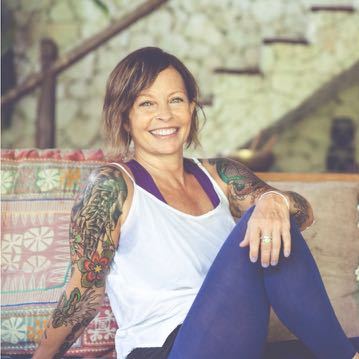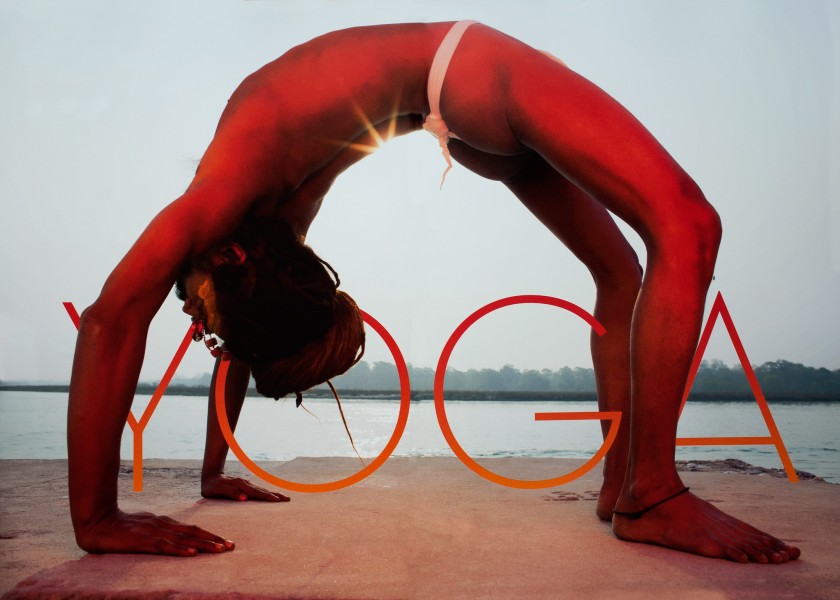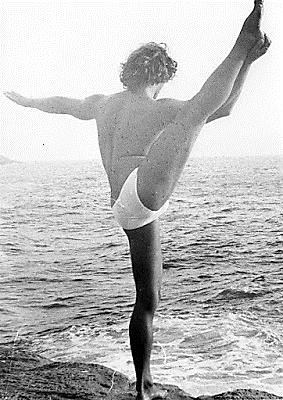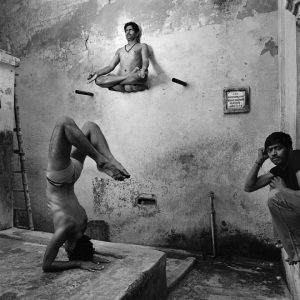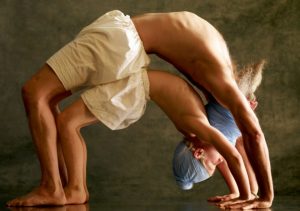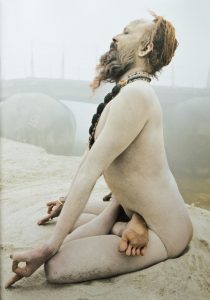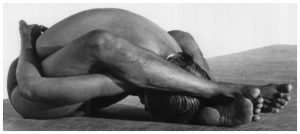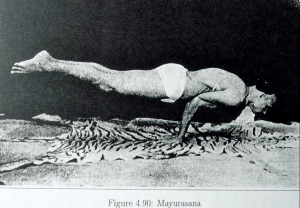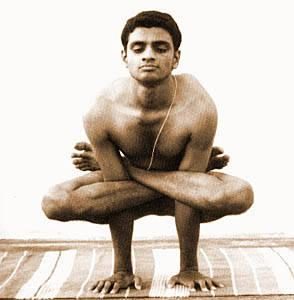by Master Yoga Teacher Felice Vernillo founder and owner Shakti Integral Yoga -Italy
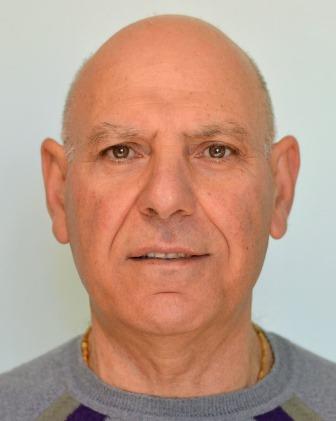
Yoga is a patrimony, a treasure for the whole of humanity, within which is contained all that can serve to complete the path towards self-realisation, in the awareness of unity with the whole. However, in the process of the discovery of Yoga by the Western mentality, as often happens in the rational and consumerist approach, the meaning of the ancient discipline is being distorted, giving rise to a somewhat distorted and reductive use value of this powerful instrument .
Today “we do” Yoga to get better, to relax, to release tension and cope with the discomforts of an unbalanced life. There is no doubt that Yoga helps in this: ” It’s the least” that such an ancient and wise discipline can offer the fragile and disoriented contemporary human being. Most of the people who come into contact with Yoga today, profusely poured from gyms, spas, hotels, holiday villages and so on, see themselves offered a sort of pill, a symptomatic medicine to break down a fever coming from a much deeper unease.
Thus, Yoga becomes a soothing as another, like a good massage, a sauna, a morning run in a park. More over the proven effectiveness of the postures related to the practice of Yoga has meant that dozens of “new yoga” were born, with exotic and bizarre names, that have nothing to do with the sacred and ancient tradition born of passion, desire and dedication of millions of practitioners at all times. This is why I believe that Yoga should be restored to its original intent, to the spirit of those individuals, practitioners, masters who have strongly desired and wanted to forge a powerful research tool, which could give a concrete answer to man’s eternal questions. To ask questions about one’s own existence is a duty of every human being, and it is his full right to be able to make a free search to become aware of the truth of his being.
Hatha yoga is the most popular aspect of yoga, but at the same time the most misunderstood. More and more often mistakenly considered as a simple exercise of positions, not only by adventurous practitioners but, above all by little or not qualified teachers.
Asana is a term that in yoga indicates assuming a body posture. However, asanas are something more complex than a simple position. Asanas being an integral part of yoga are not just a physical exercise, but involve both physiological and psychological processes. They are connected to all the other aspects of yoga: they are rooted in the ethics of Yama – Nyama and have their purpose in spirituality (Samadhi). Yoga uses the body to exercise and control the mind; in the most advanced stages, the body and mind together harmonize with the soul.
The hatha-Yoga of which the Asanas are the base, have purification as their primary objective. Purification means the removal of what does not belong to the true reality of what we want to purify. The whole yoga path consists in keeping our being free from all kinds of impurities, physical, mental, emotional, intellectual.
The practice of Asanas, first of all teaches us to communicate with the body.
Patanjali defines Asana as a stable, comfortable and effortless position (Sthira-Sukham Asanam). Therefore Asana is a position of the body but also a mental condition, a precise attitude held during the practice.
The etymological root of “Asana” is “ASA“, ie: Where I Am Connected …
ASANA … means what helps to take a stable and comfortable yoga position; it is the third aspect of Yoga, according to the scientific scheme of Patanjali. Literally it means: Where I am … and in what state I am …
Speaking of Asanas, according to Yoga, the body is only the starting point for accessing the individual. For any type of activity, a position is required. Yoga defines the position of the body in two ways:
1. Pavitra – It is that situation in which the body takes a certain position that has to do with the outside world.
2. Asana – or Posture when we do not carry out an external activity, through the use of arms and legs but, we assume that posture to be able to start the “inner perceptions“. That is, when we do something that concerns ourselves, inside. Asana is a physical posture but can also be a mental attitude.
If the body can assume a certain position, the mind can also assume its positions and its attitudes; depending on what we have to do, the mind is stable in a certain type of attitude, in this case it is a mental asana.
The term Asana implies the concept of stability; strengthen the ability to be stable, practicing long and consistently. The guidelines have already been scientifically defined by Patanjali who represents the undisputed authority on the subject. Nothing needs to be invented in this regard.
Y.S. 2 °-46: “Sthira Sukham Asanam”
“What is stable (Sthira) and comfortable (Sukham) is Asana”
When we talk about Asanas, in relation to the body, it means that there is no effort at the cortical level but there is an action that takes place at the level of the cerebellum (lower or proprioceptive centers).
The posture thus practiced, allows the mind to be involved in something else that in yoga is the conscious experience of respiratory movements.
As long as it remains at the cortical (voluntary) level, there is involvement and attention cannot transcend into universal or perceptive states.
THE ASANA OPERATE SCIENTIFICALLY
The central nervous system uses its lower centers of integration to maintain posture and balance. These lower centers are located in the medulla oblongata (varolio bridge), in the cerebellum in the midbrain and in the ganglia. Numerous reflexes are integrated by these lower centers, which operate below the level of consciousness to maintain position. Postural reflexes occur unintentionally following the stimulation of different proprioceptors and visceroceptors, in the muscles, joints, tendons, under the soles of the feet. The rhythm of muscle tone can be regulated by the lower centers completely independently and with absolute efficiency, while the upper centers of the cortex do not interfere in the least.
Every voluntary effort on the part of the body and mind means activity on the part of the higher centers, which prevail over the lower centers of integration. This disturbs the normal activity of the lower centers with regard to postural reflexes, this is due to the fact that the motor impulses are transmitted directly to the skeletal muscles.
When the learning of the asanas is started, a little effort is required for the muscles, joints and tendons. Then gradually, the maintenance time of the asanas is increased. During this phase the will plays a dominant role on the lower centers, it is engaged in the stretching of the muscles, in their contraction, in the abdominal compression, also feeling some discomfort here and there. Many people, since they consider the asanas of simple physical exercises, practice them in the form of isometric and isotonic exercises. It is obvious that, by changing the execution method, the results will be different.
Let us consider the isometric and isotonic elements that are introduced in the practice of asanas, then later we will deal with the mode of execution envisaged by the fathers of the classical yoga tradition.
Voluntary efforts are made to reach the final stage of an asana. The muscles and joints are activated and kept in position for a certain time, in fact the maintenance of the asanas constitutes the final stage. This prolonged contraction of the muscles is nothing more than an isometric exercise. An active stretching of the muscles produces an active contraction, as a result of the stretch reflex. The tension increases and this increase is felt by the joints, tendons and muscles, if it exceeds a certain limit, it causes discomfort and pain. All of this produces muscle fatigue and even tremors. This isometric activity increases the commitment of circulation and breathing, as the muscles’ need for oxygen is increased. Such an execution acts above all on the superficial muscles, rather than on the deep ones and on their nerves. Internal pressure changes and proprioceptive mechanisms (lower centers) hardly have time to affect the nervous system.
Sometimes asanas are deliberately practiced as isotonic exercises. In this type of execution the dynamic phase predominates, and leaves no room for maintaining posture. This type of exercise causes heating and profuse sweating, and excites the activity of the Sympathetic Nervous System, produces cardiovascular exertion, waste of energy with consequent fatigue of the whole body. It is easily understandable that such a practice for an individual suffering from a permanent state of severe stress or anxiety (a very common condition in contemporary society) not only does not help but actually fuels these forms of disorders. However, if a subject is in a state of hypotonicity and depression, active stretching and prolonged contractions will develop tone and muscle strength, producing energy, activity and enthusiasm in the person, thanks to the action on the Sympathetic Nervous System.
What happens instead when the asanas are practiced in the right condition of muscle relaxation, or with voluntary reduction of effort and absence of tension in the joints, muscles and tendons?
Attention is directed to the breath, with a detached observer attitude (Sakshin), this attitude allows to relax the body further, releasing the tension of voluntary efforts. The mind is emptied of thoughts, in the absence of mental activity and voluntary efforts there is no cortical activity (higher centers) for the whole time of maintaining the position. The lower centers that regulate posture and balance are free to act effectively, without interference, however, the type of postural reflexes that are determined with the related stimuli depend on the particular postural model, or on the specific asana performed.
We have seen that muscle tone is the basis of posture and can be influenced by emotional states or the person’s mental condition. When muscle tone is reduced, due to the passive stretching of joints and muscles, a sedative and calming effect on the nerves results. Emotions cannot manifest themselves in a pronounced way: in this way it is possible to face one’s own emotional load, reducing emotional tensions and relaxing more and more deeply. There is therefore the absence of internal disorders (vikshepa) or conflicts (dvandva) and it is therefore possible to eliminate states of physical or mental instability. In a relaxed and stable posture, internal awareness not only calms the mind, but also conditions it through the functional connection of the cerebellum-hypothalamus postural reflex. Sympathetic activity is suspended while parasympathetic activity restores stability to various levels. Now the body begins to “speak” to the mind through various sensations that are perceived by proprioceptors and integrated involuntarily by the lower centers. This explains why, in the long run, we see the effect of such an execution on the postural model of the subject.
According to the principles of yoga, the most profound changes occur when the forces that hinder change diminish. In the case of intrinsic balance, a deep level of internal support is needed, this support exists and takes shape when any extraneous muscular effort ceases to hinder it. The unconscious muscular effort we make to constantly counteract the force of gravity requires a lot of energy. Consequently, when this effort ceases, the experience is that of an energy that is released, because of this we can define the intrinsic balance as a source of energy, precisely because of the profound sensation of vitality that distinguishes it. This explains why yoga asanas help to release the potential energy of the axial skeleton by identifying and loosening the foreign muscular effort that hinders the innermost and deeper forces.
Patanjali clearly indicates how the practice of an asana should be conducted:
Y.S. 2nd – 47: “Prayatna Shaitilya Ananta Samapattibhyam”
“The absence of effort (Prayatna Shaithilya) leads the mind to orient itself (Samapatti) towards (Bhyam) the infinite (Ananta)”.
In asana there is the concept of being able to put oneself in “contact with the infinite” but, if the being remains tied to the physical experience, if it remains within the limits of the body, it will never be able to transcend the state of awareness limited. The “Knowledge” comes when one comes out of the dual game of “effort” and “tension”, the mental state becomes more open and the thought more global; with the absence of effort, the mind enters a state of emptiness.
Patanjali: Y.S. 2nd – 48: “Tato Dvandva Anabhighatah”
“Then (Tato) the tension (Dvandva) disappears (Anabhighatah).”
Speaking of Asanas, in relation to the body, muscular tensions can be released only if one has the capacity to abandon oneself and transcend.
Y.S. 2nd – 49: “Tasmin Sati Svasa Prasvasa Yor Gati Vicchedah Pranayamah”
“Asana is reached, in a stable and comfortable way (Tasmin Sati, comfortable for the body and for the individual), one becomes aware of the movements of one’s breath (Svasa and Prasvasa), of the energy (Prana) that produces the movement (Gati) and how this energy acts within us.
H. P. 1 ° -17: “Sthairyamarogyam Cangalaghavam”
“Asana is a factor that contributes to achieving stability, health and lightness of the body”
The result of the state of “Asana”, when we transcend it, is to be able to enter the “awareness of the breath”
Y.S. II-49: “Tasmin – sati svasa – prasvasa – yor – gati – vicchedah pranayamah”
“You can proceed only if you have the ability to experience” Svasa “and” Prasvasa
a) Svasa: the conscious experience of the movements that follow the inspiration.
b) Prasvasa: the conscious experience of the movements that follow the expiration.
As long as it remains at the cortical (voluntary) level, there is involvement and attention cannot transcend into universal or perceptive states.
During a physical exercise, the mind is concentrated on something that happens outside while in “Asana”, the mind must move inward.
It is essential for a yogi to know “how” the mind must move inward, during a particular Asana.
For example: I could also put myself in perfect Padmasana position and continue to chat happily: while the body is in Asana, the mind is out of practice.
The concept of “asana” is linked to that of “posture” which is completely different from the concept of “physical exercise”. Maintaining a “posture” is the way that allows us to analyze ourselves and remove from ourselves what disturbs us and does not allow us to remain in balance.
This is why Patanjali tells us that there are two ways of practicing Yoga:
1. Bahiranga Yoga: Literally means external Yoga
2. Antaranga Yoga: Internalization of our faculties, Yoga facing inward
Given the person’s two abilities, both to turn outwards: “Bahiranga”, and to return to himself and remain in himself: “Antaranga”, it is fundamental for Yogis to know that they must set their practice on these two aspects.
Working with the individual, as Yoga asks of us, means “working with his conscience”, not only with the “physical structure”.
For yoga the greatest victory is the victory over oneself, over one’s weaknesses, over one’s fears, over one’s afflictions
To find out more about Master Yoga Teacher Felice Vernillo (Arjun Yogi)
please visit his website: www.shaktiyoga.it/
